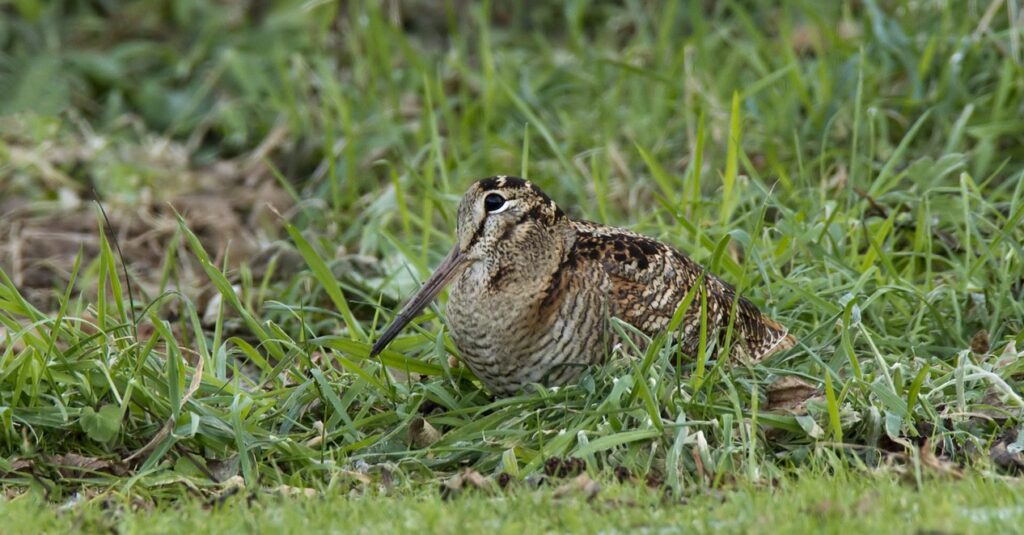Facts about the Woodcock
Scientific name: Scolopax rusticola
Bird Family: Sandpipers, snipes and phalaropes
UK conservation status: Red
At a glance
- UK resident and winter visitor, as its name suggests this 'shorebird' breeds in damp woodlands.
- Renowned for their 'roding' displays, males look remarkably like large bats as they fly back and forth over the tree line.
- Despite Red-listing and vanishing from many sites, perhaps 150,000 Woodcock are shot every year in the UK.

One of eight woodcock species worldwide, the widespread Eurasian Woodcock (or ‘the woodcock’) is a fabulously dumpy, long-billed bird. Crepuscular (feeding at dusk and dawn as it probes the soil with its long bill), the species weighs about 300 grams, has huge glistening eyes positioned near the back of the head like a hare, and feathers like fallen leaves to match its woodland habitat.
Woodcock rely so much on camouflage that if we pretend not to notice them they’ll pretend not to notice us – at least until we get so close they will suddenly spring up at our feet like a big brown grasshopper and whirr away before dropping down and disappearing into the background again.

Fantastically adapted - but declining
Renowned for their ‘roding’ displays, males patrol a large area of woodland at dusk, looking remarkably like large bats as they fly back and forth over the tree line, overlapping with other males as they compete to attract the attention of females. A 2023 study revealed that Woodcock have the whitest feathers ever measured – used to ‘communicate’ their position in the semi-darkness.
The species breeds locally in Europe & N&C Asia, wintering south to N Africa & SE Asia. Listed as Least Concern across the rest of its large Eurasian range, they are no longer found in many former breeding areas here and the species has been put on the UK Red List.
Precisely why they are declining isn’t known. Recreational disturbance, the drying out of natural woodlands, overgrazing by deer, declining woodland management, and the maturation of new plantations are all possible causes.
While in no immediate danger of extinction globally, extirpation or local extinction as a British breeding bird is possible. Even shooting lobbyists the GWCT admit that “At present, we cannot rule out shooting as a factor contributing to the decline of our resident woodcock.”!
Why is there a ‘season’ to shoot Woodcock at all though?
Because shooters want one and conservation organisations have never stood in their way. They have fiddled around the edges, asked for ‘self-restraint’ in harsh winters when the ground is frozen and Woodcock can’t feed using enormous amounts of energy just to survive the night, but not said, ‘Our remit is to protect birds and we disagree with killing them’. Not even Red Listed ones like the Woodcock – because, conservationists say, it’s not the UK Red Listed breeding birds that are being shot, but Least Concern eastern European ones that are still relatively plentiful…
That distinction makes no difference to the bird that is shot of course. Besides which data on Eurasian breeding woodcock is lacking, and climate change is rapidly drying out the woodlands these birds use anyway. Forest fires are starting earlier in the year. As with so many other threatened species, we won’t know how much trouble Woodcock might be in until they’re suddenly no longer here.
